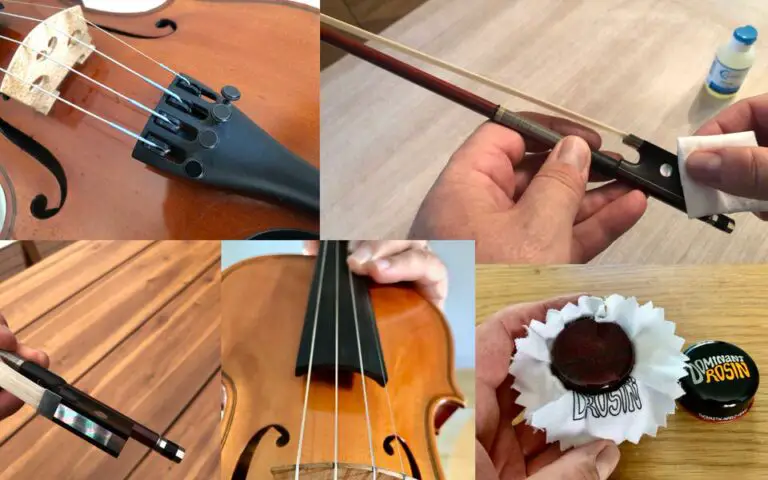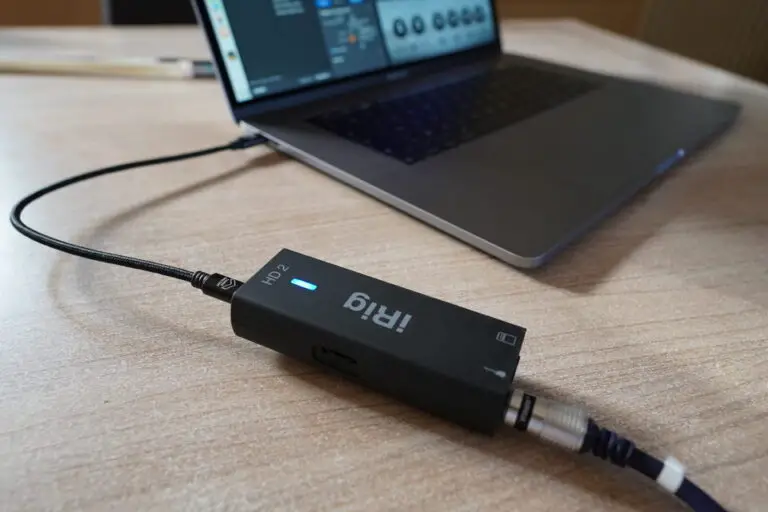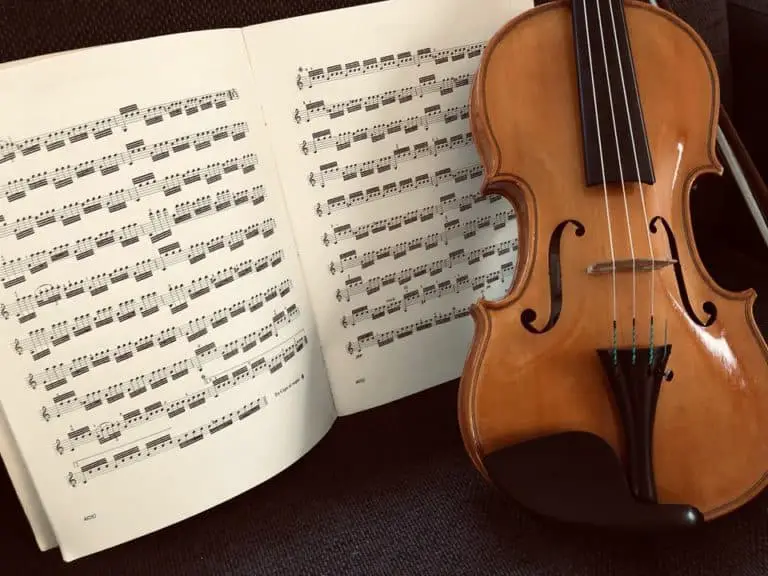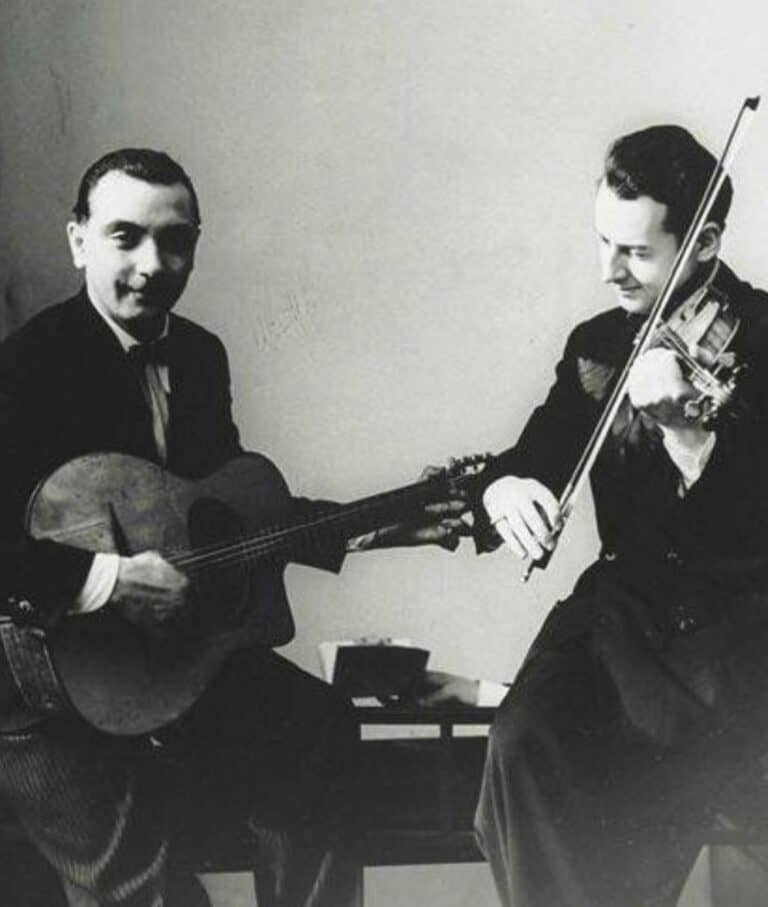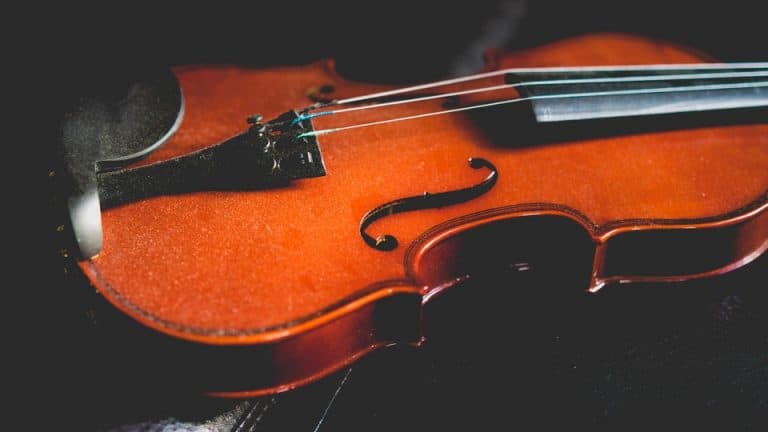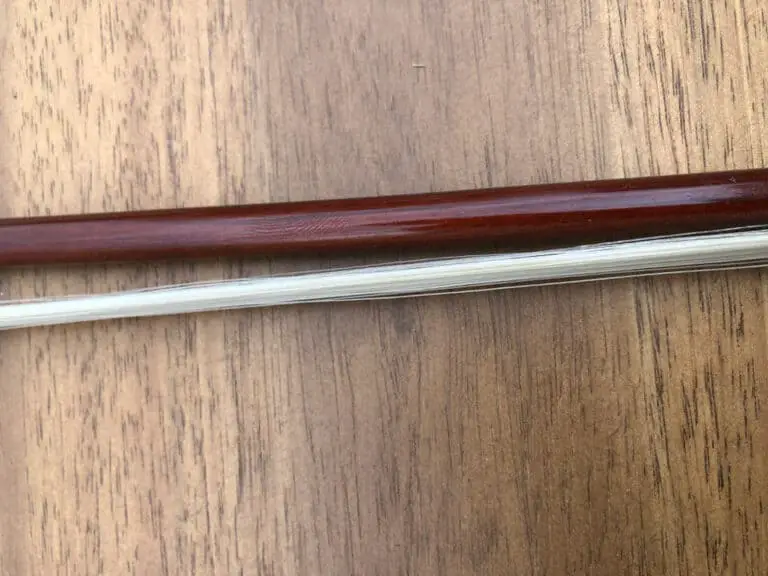What is Violin Virtuosity? 6 best virtuosic violin pieces (with videos)
Violin has always had the reputation to be an incredibly incredible instrument: a magical and devilish one.
Virtuosity is in the mind of every listener when we think of music. The violin had been a melodic and beautiful instrument for a long time when Paganini came along.
Virtuosity can be summed up into five aspects of violin technique: speed, pizzicato, staccato, jeté, harmonics, and chords. 6 incredible pieces can illustrate them: Paganini Caprice 5, Caprice 24, Hora Staccato, Recuerdos de la Alhambra, Paganini Concerto 1, and Mozart by Roman Kim.
A brief history of Paganini and his inventions
Nicolo Paganini started the violin all over again, on a completely new basis. Music had been from simple to complex, before Paganini, yes, but mainly complex of the same simple ingredients: melodies and chords.
Then came Paganini. He didn’t play in positions: his hand extended everywhere on the fingerboard. His fingers were so flexible, they could stretch into octaves, fingered octaves, and even 10th. A bit like a snake, his left hand was creeping up and down the fingerboard, without order and method.
Then the sound.
Paganini was an entertainer: he loved to incorporate wizardry in his playing. The audience was listening to a melody? He hid pizzicati under it but left-hand pizzicati that nobody could see. He was playing low notes? He jumped up and down to ultra-high artificial harmonics to surprise the audience without showing anything special in his playing. Yes, he could play chords like nobody. He could play two notes at once, but also three, and then four. He could play like a quartet. Have I mentioned harmonics? Yes, but he invented double-artificial harmonics, that created the effect of two wind instruments playing together.
And then, the overall impression that anything is possible. Any scale, any sound, any speed; up and down the neck, light or loud, singing, whispering or screaming: his violin was everything at once.
Some criticized him and said it wasn’t too serious: I bet it wasn’t. There is a lot of irony and humor in his playing and his life. He was the first “guitar” hero and laid the ground for many to come after him. So he knew how to sell himself, how to make himself scarce, how to disappear, how to hide from the public. Like Eddie Van Halen who played turning his back to the public, Paganini only played his score during the actual concert and not during rehearsals to keep his wizardry secret.
Why did Paganini create all that virtuosity?
It’s a mental trick. The root of all raw virtuosity is to break all barriers. At that time, orchestral works became more and more complex. You had to become a better and better violinist to interpret that new repertoire. And if you struggle to play a piece technically, there is no chance you will ever play it for a concert.
Why instrumentalists have to be far better than they sound
We violinists are no robots. There is a huge difference in what we can achieve in our practice room compared to the concert hall. What we can achieve under pressure has to be accomplished a hundred times better in our room, not just a bit better. If we can play something ok, there is no chance we can play it at a concert.
Something has to be broken; our technic has to be of another order magnitude better if we want to accomplish something with ease under pressure.
It is a mental trick. So Paganini thought: “Ok, do I need to play fast in a piece for 12 bars? Then I am going to write a study (a Caprice) where I need to play ultrafast for 240 bars”.
Next time he will have to perform 12 difficult bars, he will laugh through them.
Paganini wrote 24 Caprices to break the mental barrier to virtuosity once and for all
From then on, Paganini took every technical difficulty and turned the volume to the maximum: chords, pizzicato, harmonics, polyphony, jumping non-adjacent strings, trills… He wrote a separate Caprice on each of those and combined them.
The quintessence of his art, on a Caprice-like level, is certainly the 24th caprice where everything is presented and mixed, put in perspective in one of the most beautiful and intelligent ways.
Paganini invented virtuosity
After creating this incredible world and achieving what was thought to be an impossible feat, he just couldn’t play a Bach concerto anymore… But who blames him for that? He turned down Berlioz after making him compose “Harold en Italie” for him: it wasn’t difficult and virtuosic enough… You’ve got to love him… The violin wouldn’t be the same without him, but not only that, but he influenced others instruments too. Litz created techniques on the piano under Paganini’s influence. And he transcribed many pieces, including the 24th caprice.
Virtuosic violin techniques
1) Speed
There is fast and fast. A normal musician will play fast notes: he or she will think about the notes in the mind and execute them at a solid pace. That is how a normal human being plays fast.
And then there is Paganini fast. It isn’t normal anymore. There is a broken mental barrier here, for sure. But in a nutshell, that new speed can only be achieved if the musician disappears behind the music if he or she doesn’t think about notes anymore. The trick is to breathe, to concentrate on our breathing. And then withdraw our conscience and just be present. Let the music flow inside us. That is the only way to play fast without our breath-stopping, heart beating fast, muscles tightening and our mind singing notes, which is the recipe for failure.
That type of speed is close to magic and gives that impression to the listener. It serves several purposes, and not only the player’s vanity:
- again being able to play anything without effort,
- performing light, funny pieces such as an encore that the public will enjoy,
- strange effects romantic and impressionist music like, where notes are not played for themselves but for the impression they will give to the listener.
If I can share with you the raw speed that can achieve a true virtuoso, I will choose the 5th Caprice by Paganini played by Leonidas Kavakos. It is incredible, unbelievable: but if you listen closely, or slowly with electronic equipment: it is all there. Precise and clean. A true feat. Here is the video for you. The video is not of great quality but the violinist is…
2) Pizzicati
Pizzicato (plural pizzicati) means plucking the string with a finger (as opposed to with the bow), in a guitar-like style.
Ok, it is well known that violinists can pluck the string with their fingers for a certain style, in certain pieces where they have to accompany other instruments softly as if the orchestra was a giant guitar.
But Nicoló didn’t stop there, you could guess. He thought: “if I can pluck the string with my right hand, so can I with my left hand”. He created the left-hand pizzicato.
It consists of a particular technique where you still play the violin with the bow but you pluck the string with a finger of the left hand while stopping another string with another finger!
It creates strange effects:
- a violin plays with a fake accompanying guitar,
- if you hit the string with the bow hard enough, and play left-hand pizzicati, it sounds like plucking the string very fast, like a guitar.
So, right-hand pizzicati are common. But as an example of the left-hand pizz, I had to choose Paganini, of course, and more precisely the 24th Caprice. There is a whole variation on that technique. I have selected the right time stamp for you to go right there.
A technique that I have only seen (or heard) is from Subramaniam: that is to say, playing right-hand pizz WHILE playing chords at the SAME time. He takes into advantage the fact that he comes to the frog while playing chords: he then deploys his finger and plucks the strings in his way back to the tip of the bow. Great violinists are always creating new tricks!
Right-hand pizzicato while playing: Subramaniam !
3) Staccato
Notes can basically be played in two ways: they can be linked together in the same bow stroke, it’s called legato. Each note is not separated from the next one in which it fades.
But they can be clearly separated from each other, detached in a way: it is called détaché.
But détaché notes can be fast up to a point: not as fast as legato notes, because of the changing of directions of the bow.
Pianists, on their part, can play legato and separated notes as fast.
That couldn’t satisfy Nicolo Paganini: he developed the Stacatto bow stroke.
It consists of a trembling effect due to a crispation of the bow arm. Each trembling motion is a note and has to be coordinated with the left hand. So it is basically a legato with a trembling arm.
There you can play ultrafast détaché notes! But it is incredibly difficult to execute.
You could guess our favorite maestro didn’t stop here: he developed a bow stroke called flying staccato where the bow bounces off the string between each note. It is faster, but creates a dramatic effect and can be louder.
Staccato bow stroke is one of the most difficult ones but sometimes the audience doesn’t understand how incredible it is. That is why the difficulty/benefits ratio is such in disfavor of this stroke that is quite rare and is seldom seen outside of romantic show-off pieces.
If executed properly, though, it can be breathtaking, especially if filmed with emphasis.
Filmed with emphasis with a great performer: I had to choose Hora Staccato by Jasha Heifetz. Everything is there: the incredible bow stroke played a lot in this piece, arranged by the Master and inspired by Central Europe traditional music. Enjoy.
As a bonus video, in a sense, here is the rare and incredible way of playing by Subramaniam: a kind of staccato or tremolo executed with a trembling bow arm, together with left hand pizzicato for accompaniment.
4) Jeté and Ricochet
Jeté means “thrown” in French. A jeté is when you just throw the bow on the strings: naturally, it will bounce back. How you master that natural bounce is the type of bow stroke you’re looking for.
If you throw the bow in one direction, it is a natural jeté or ricochet, for example in the famous theme of La Campanella, by Paganini.
If you throw the bow in one direction and back, then it is called “double ricochet” and is typical of Paganini’s first caprice.
The pure jeté can be long: you play many notes on the same bow.
Lastly, Paganini used the 3-1 type of jeté, that is to say, 3 notes in one direction, and one-note back to the original point, to keep the pace. Typical of this stroke, the 3-1 jeté, are “Recuerdos de Alhambra” and the 5 Caprice by Paganini in the original bowing (as written by the composer).
Once again Leonidas Kavakos will be featured here, in this marvelous piece: “Recuerdos de la Alhambra” by Tárrega. This piece is strange because the famous composer, a Spanish guitarist, composed it to imitate melodic instruments with long notes, with an accompaniment. But long notes are impossible to do on a classical guitar: he created the effect of long notes by picking a note fast and many times while doing arpeggios as accompaniments. Then, an American Violinist of Italian origin, Ruggiero Riccia, rearranged that piece for the violin, a melodic instrument, playing with jeté strokes the original guitar-style 16th notes, imitating a melodic instrument… If you have understood that without reading again, congratulations! But it is how strange virtuosos can be when they create new pieces and tricks. Listen, and judge for yourself.
5) Harmonics
There are two ways of playing a note. The first way is by stopping it with a finger. The other way is by brushing the string with a finger without actually touching the fingerboard. It is called “harmonics”.
Using this method, the violin sounds like a flute or a wind instrument. Or someone whistling. The effect is strange and interesting. But there are not many natural harmonics you can play on a violin, for a reason I will not detail here. So Maestro Paganini invented the concept of “artificial harmonics” that allowed him to play any note in that whistling style; incredible already. But he didn’t stop there: he played harmonics in double stops. Two harmonics played at the same time gave the effect of a church organ playing high notes.
It was never heard of at that time and Paganini really surprised the audience playing like that. It contributed to his wizardry reputation for sure.
I had to choose Paganini again to illustrate that technique, although other violinists – composers used it, but after him, as a tribute. If you are not used to harmonics and double harmonics on a violin, you will be surprised as the sound is strange but interesting. Here is the impeccable Augustin Hadelich performing this treat.
6) Chords
The violin is a melodic instrument. Usually, a violinist plays one melody at a time. But there are all those 4 strings… Early enough, good violinists started to play on two strings at once (double stops) with the bow playing two strings at the same time: two melodies. Then, if you squeeze the middle string down a bit, you can play three strings at once: it can be chords or three melodies. And then, of course, by playing fast and loud, you can play all four strings at once.
It has been done way before Paganini. Even during the baroque era violinists played several strings at once, being inspired by the harpsichord or the guitar.
This technique is quite impressive as it sounds like several musicians are playing at the same time: a whole quartet sometimes or string section.
There are many and many pieces using that technique, as it isn’t a gimmick such as other virtuosic tricks. It is deeply required by music and sounds great on the violin. But if I had to choose one incredible video for this article on virtuosity, I would choose this arrangement of Mozart by Roman Kim. If you couldn’t see the video, you could swear there is more than one violinist playing! Roman Kim is a young violinist that follows the steps of Paganini in the quest of extreme virtuosity. This last piece can be a sum up of all of the tricks that we have discussed in this article: left hand pizzicato, chords… Thank god we have young musicians to keep on creating great music!

